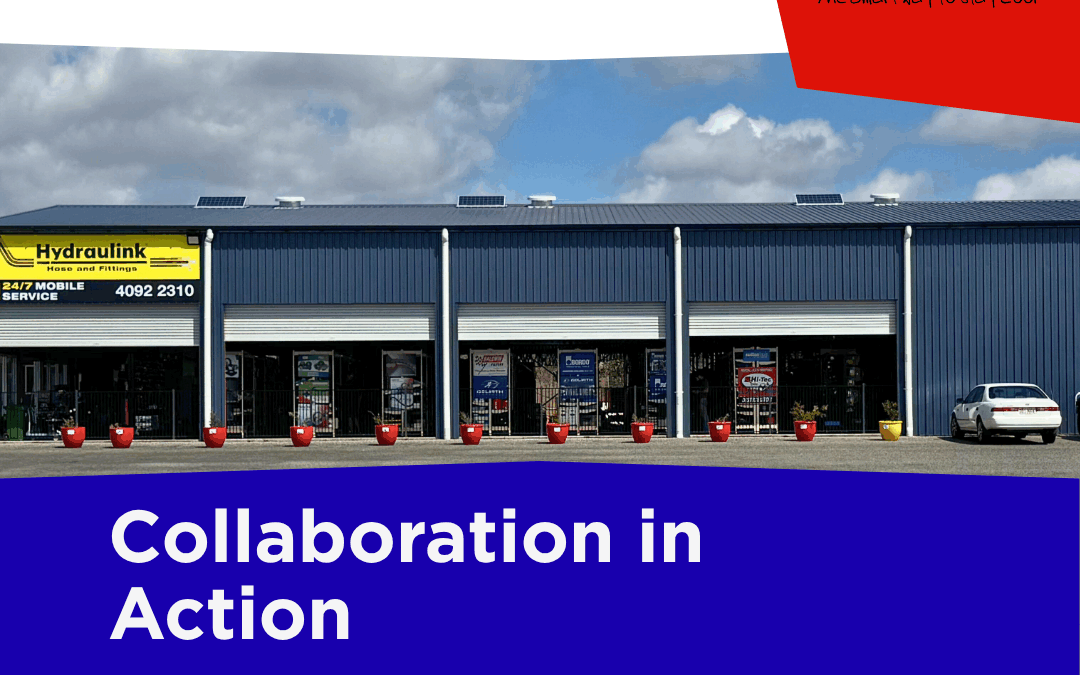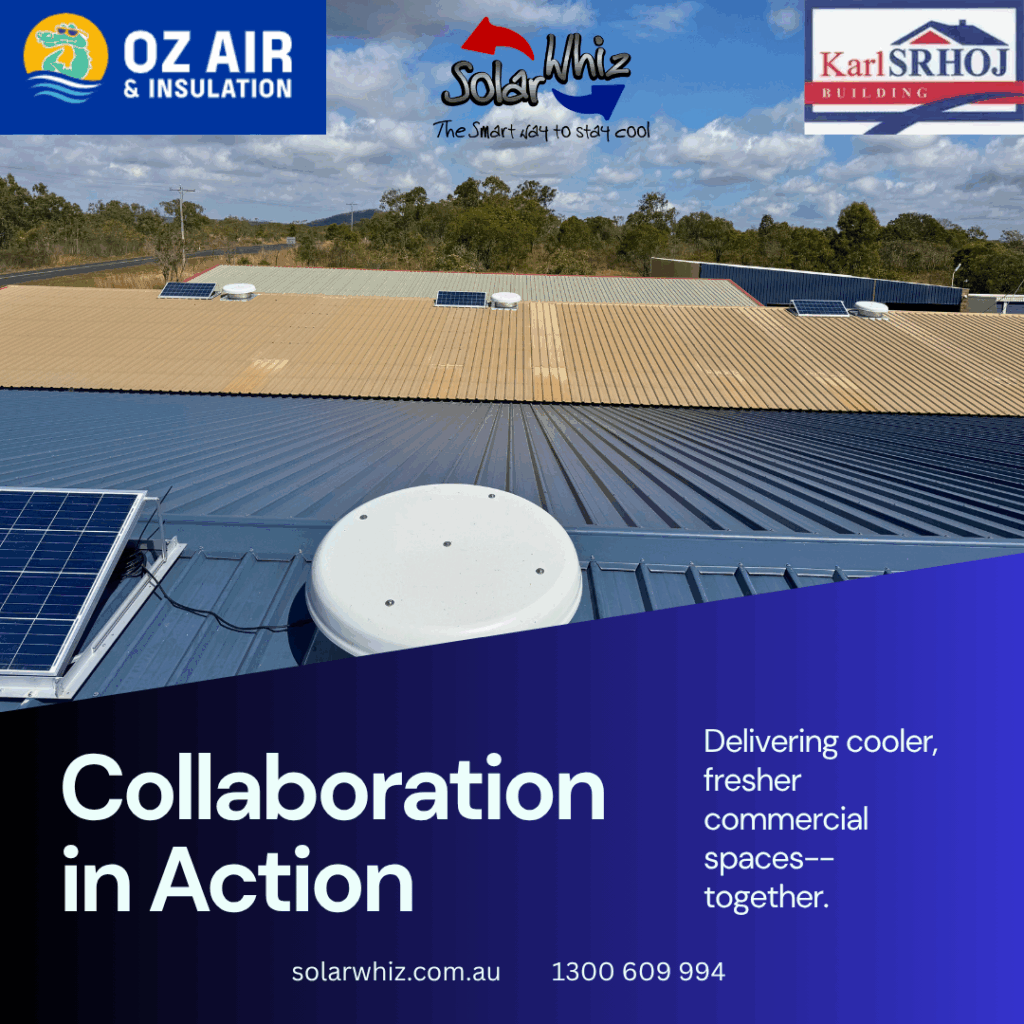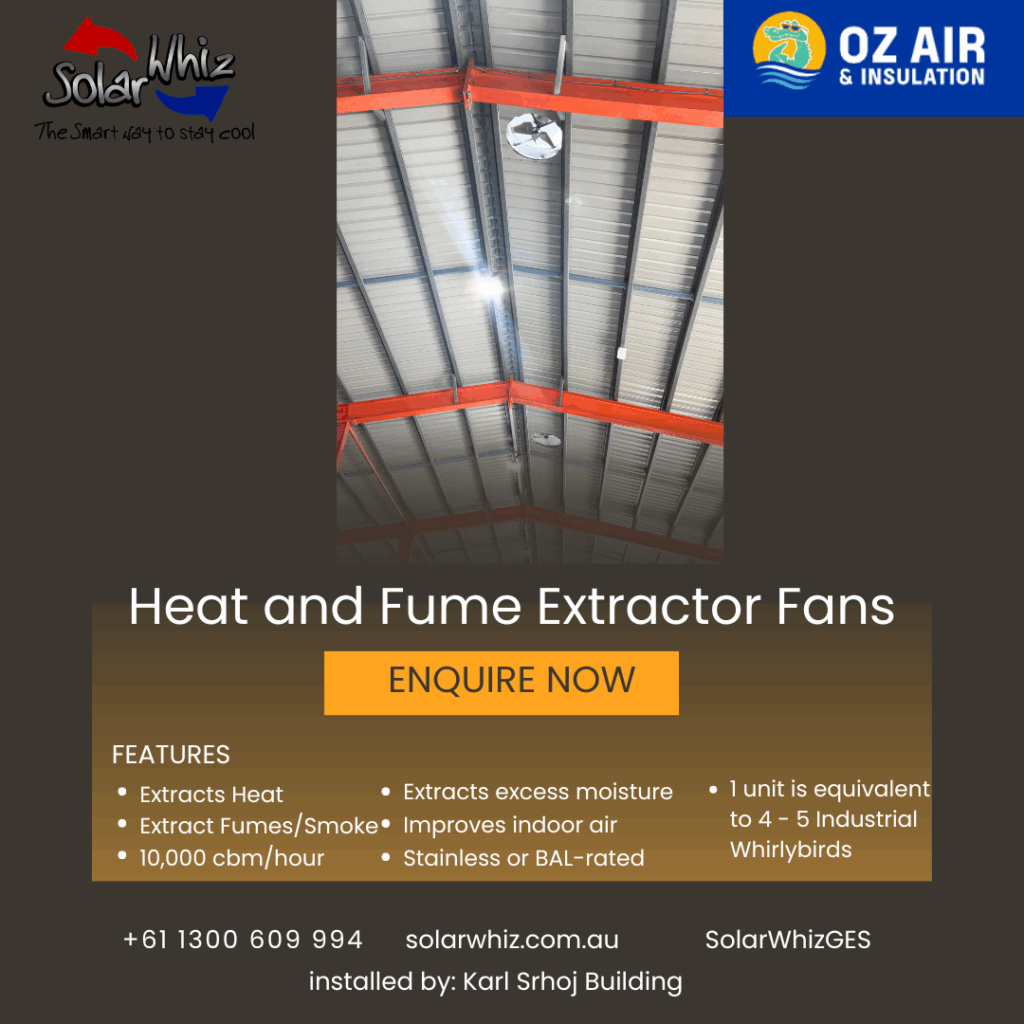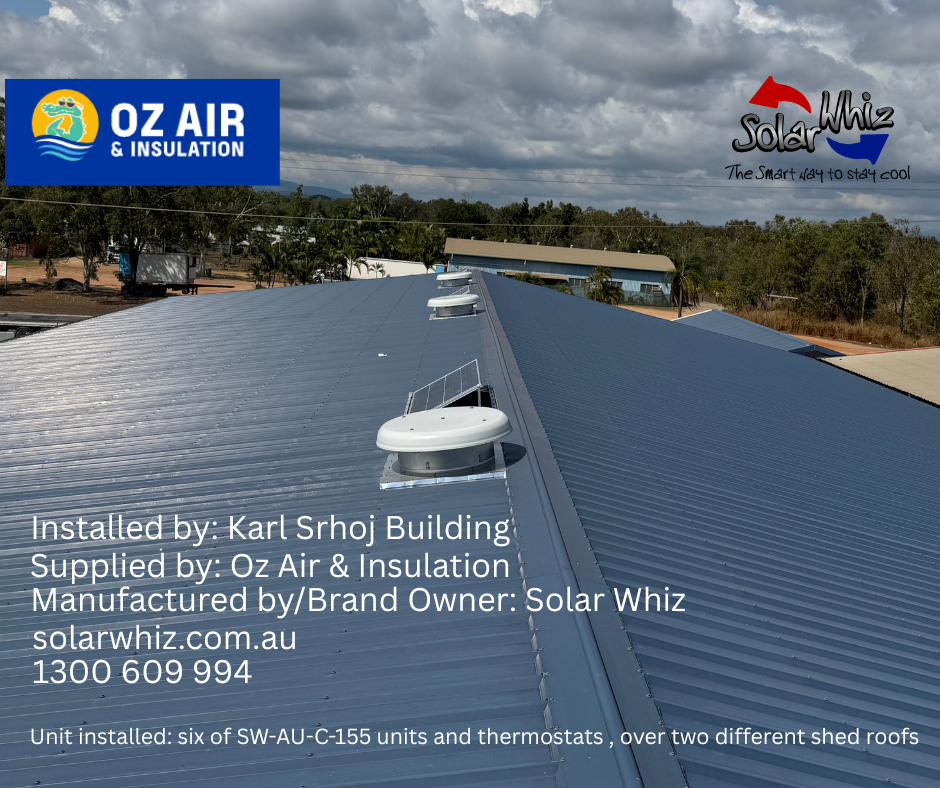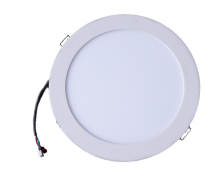Last Updated on August 13, 2025 by Solar Whiz
The Hidden Cost of Poor Warehouse Ventilation
Warehouses are the backbone of many businesses, but they’re also prone to extreme heat build-up, stale air, and excess moisture — especially during the Australian summer. These conditions can lower staff productivity, damage stored goods, and even increase the risk of equipment failure.
Many warehouse owners turn to Big Ass Fans — large HVLS (High Volume, Low Speed) fans — to improve air movement. While they can create a cooling breeze, they don’t address the core problem: trapped heat and poor air quality. That’s where Solar Whiz offers a smarter alternative.
What Are Big Ass Fans and How Do They Work?
Big Ass Fans are oversized ceiling fans designed for large commercial and industrial spaces. They move large volumes of air at low speeds, helping create an evaporative cooling effect on skin and dispersing pockets of stale air.
They’re often installed in:
- Warehouses
- Manufacturing plants
- Sports facilities
- Aircraft hangars
While they can make a space feel cooler, HVLS fans do not physically remove hot air — they simply push it around.
Limitations of Big Ass Fans in Warehouses
Big Ass Fans can be effective for air circulation, but for heat-prone warehouses, their limitations are hard to ignore:
- No heat extraction – They recirculate hot air instead of venting it outside.
- Ongoing running costs – They rely on mains electricity, which adds to power bills.
- Ineffective for high humidity – Fans move moist air but don’t reduce moisture levels.
- Clearance requirements – HVLS fans need large vertical space, limiting their use in lower-ceiling warehouses.
- Limited fume control – They cannot actively remove exhaust, dust, or chemical fumes.
- Dust build-up – Over time, the large blades can collect dust. When running, that dust can be blown down onto workers, products, and equipment, creating hygiene and health concerns.
Introducing Solar Whiz: A Smarter Big Ass Fans Alternative
Solar Whiz is a commercial roof ventilation system that actively extracts hot, stale, and humid air from warehouses — rather than just moving it around.
Key features for warehouse applications:
- Powerful heat extraction – The SW-AU-C-155 model moves up to 10,000 m³/h of air, pulling trapped heat out of your warehouse.
- Moisture & fume control – Ideal for warehouses storing sensitive goods or housing production equipment.
- Solar-powered operation – Zero running costs during daylight hours.
- Hybrid capability – Can switch to mains power when needed.
- Flexible mounting – Can be installed on roofs or walls to target problem areas directly.
- Built for Australian conditions – Bushfire-rated options available, with stainless steel for moisture-heavy environments.
Big Ass Fans vs Solar Whiz: Warehouse Ventilation Comparison
|
Feature |
Big Ass Fans (HVLS) | Solar Whiz |
|
Heat removal |
❌ No |
✅ Yes – actively extracts |
|
Air movement |
✅ Yes | ✅ Yes (through extraction flow) |
| Moisture/fume control | ❌ No |
✅ Yes |
|
Running costs |
💲 Ongoing electricity |
✅ Solar – zero cost during daylight hours |
|
Airflow |
Varies – up to ~10,000 m³/h |
SW-AU-C-155 – 10,000 m³/h extraction |
|
Installation |
Needs ceiling clearance |
Roof or wall mounting |
|
Maintenance |
Fan motor upkeep |
Minimal |
| Power source | Mains electricity |
Solar (Hybrid optional) |
Case Study: FNQ Filters & Parts Warehouse
A warehouse in Far North Queensland was struggling with intense summer heat and stuffy conditions. After installing Solar Whiz units, the difference was immediate.
“The staff and customers have really noticed a huge improvement in comfort since installing the Solar Whiz units.” – Owner, FNQ Filters & Parts
By actively extracting hot air and improving airflow, the facility became more comfortable and productive — without the ongoing costs of running large HVLS fans.
Why Solar Whiz Makes Sense for Warehouses
When you’re managing a warehouse, comfort isn’t a luxury — it’s a productivity booster and a safeguard for your goods. While Big Ass Fans can circulate air, Solar Whiz tackles the root problem: heat and stale air build-up.
With zero running costs during the day, powerful extraction rates, and the flexibility to adapt to different building layouts, Solar Whiz offers warehouse owners a ventilation solution that works harder and costs less to operate.
Final Word
If your warehouse struggles with heat, humidity, or poor air quality, circulating the same air won’t fix the problem. Choose a system that removes the problem — not just moves it.
Looking for a cost-effective Big Ass Fans alternative for your warehouse? Contact Solar Whiz today for a free consultation and find out how we can keep your team cool, productive, and comfortable.
Quote Request
Quote Request
View Our
Frequently Asked Questions
Are Big Ass Fans good for warehouse ventilation?
Big Ass Fans improve air movement, making spaces “feel” cooler, but they don’t remove hot air, humidity, or fumes. For true ventilation, you need a system like Solar Whiz that actively extracts heat and stale air.
What is the best Big Ass Fans alternative for warehouses?
For heat and moisture control, Solar Whiz is a powerful alternative. It extracts up to 10,000 m³/h of hot air, runs on solar power for zero daytime running costs, and can be installed on roofs or walls.
Do Big Ass Fans reduce humidity in warehouses?
No. Big Ass fans only move air and can’t lower humidity levels. If humidity is a concern, an extraction system like Solar Whiz, with optional hygrostat control, is more effective.
Can Solar Whiz replace the need for Big Ass Fans?
Yes — in many cases, Solar Whiz can be a complete replacement. It actively removes hot air and stale air, reducing the need for large fans, especially in heat-prone warehouses.
How much airflow does Solar Whiz Commercial provide?
The SW-AU-C-155 model delivers up to 10,000 m³/h of extraction airflow, making it ideal for large warehouses and industrial buildings.
